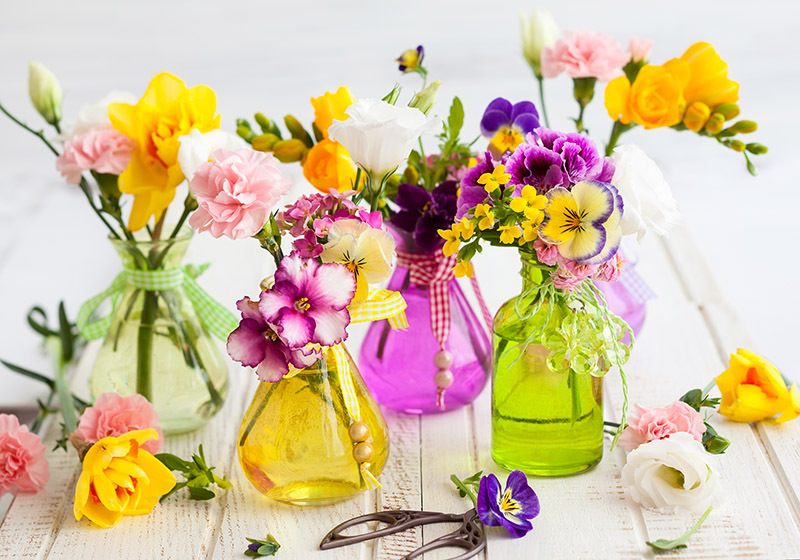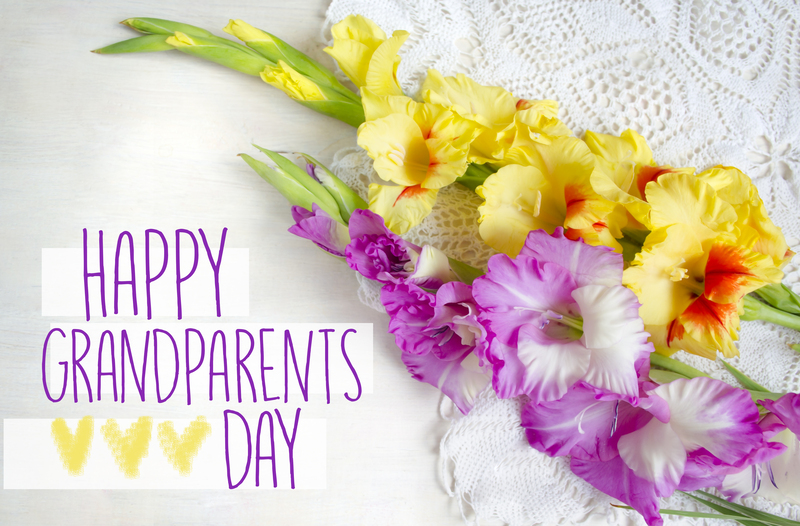The Intriguing Meaning Behind Your Birth Flower
Posted on 17/08/2025
The Intriguing Meaning Behind Your Birth Flower
Did you know that just like birthstones, birth flowers have unique meanings and symbolism tied to your birth month? Discovering the story behind your birth flower can be an exciting and meaningful journey into history, culture, and personal symbolism. In this comprehensive article, we'll explore what a birth flower is, trace its historical roots, and examine the intriguing meaning behind your birth flower for every month of the year.
What Is a Birth Flower?
A birth flower is a blossom associated with the month in which you were born. Just as birthstones carry special significance, so do these remarkable flowers. The idea of assigning specific flowers to birth months stems from centuries-old traditions -- such as Roman, Victorian, and Eastern cultures -- each attaching unique meanings, messages, or qualities to given flowers. Today, gifting or incorporating your birth flower into your life is a cherished and symbolic gesture that honors your personal essence.

History and Cultural Roots of Birth Flowers
The practice of assigning meaning to flowers can be traced back to ancient civilizations like the Romans and Greeks, who used flowers in celebrations and as tokens to their gods. In the Victorian era, the "language of flowers" (floriography) became incredibly popular, with each flower representing secret messages or characteristics. Similar customs exist in Asian cultures, where flowers like the chrysanthemum and lotus hold deep philosophical and spiritual meanings.
Over the centuries, flowers have come to symbolize qualities such as love, purity, strength, patience, and remembrance. That's why learning the hidden meaning behind your birth flower offers a fascinating insight into your personality and history.
Month-by-Month: The Symbolism Of Each Birth Flower
Let's dive into each month's birth flower and uncover their captivating symbolism.
January: Carnation & Snowdrop
- Carnation: Widely known for its ruffled beauty, the carnation represents love, pride, and distinction. In the Victorian era, different colors conveyed subtle messages: pink for a mother's love, red for deep admiration, and white for pure love and luck.
- Snowdrop: Symbolizes hope and renewal. Emerging through the snow, it signifies rebirth and the promise of brighter days ahead.
February: Violet & Primrose
- Violet: Represents loyalty, faithfulness, and modesty. Violets were once worn by ancient Greeks to deepen love and affection between partners.
- Primrose: Stands for young love and new beginnings. Its delicate petals convey a sense of renewal and innocence.
March: Daffodil
- Daffodil: The golden-hued daffodil represents rebirth, new beginnings, and hope. As one of the first blooms of spring, it's a symbol of optimism and inspiration.
April: Daisy & Sweet Pea
- Daisy: Symbolizes innocence, purity, and true love. Daisies are often associated with children and motherhood, making them a heartfelt tribute to sincerity and devotion.
- Sweet Pea: Associated with delicate pleasure and goodbyes. This fragrant flower is also a wish for blissful departures and gratitude.
May: Lily of the Valley & Hawthorn
- Lily of the Valley: Evokes humility, sweetness, and a return to happiness. In folklore, it was used to protect gardens from evil spirits.
- Hawthorn: Known for its hope and supreme happiness. Its tiny white or pink blossoms bring good luck and prosperity.
June: Rose & Honeysuckle
- Rose: Universally known as a symbol of love, passion, and beauty. Different rose colors amplify their meanings -- red for love, yellow for friendship, white for purity, and pink for admiration.
- Honeysuckle: Represents devotion and everlasting bonds. Its sweet aroma and clinging vines express the strong ties of family and friendship.
July: Larkspur & Water Lily
- Larkspur: Stands for positivity, goodwill, and lightness of heart. Each color also carries unique meanings: pink for fickleness, white for happiness, and purple for first love.
- Water Lily: Symbolizes purity and enlightenment, often associated with the spiritual journey. In many cultures, the water lily denotes rebirth.
August: Gladiolus & Poppy
- Gladiolus: Expresses strength, integrity, and remembrance. The name derives from the Latin "gladius," meaning sword, highlighting resilience and moral strength.
- Poppy: Symbolizes imagination and consolation. While often linked to remembrance, especially for fallen soldiers, poppies also embody peaceful sleep and dreams, depending on their color.
September: Aster & Morning Glory
- Aster: Known for wisdom, valor, and faith. Its star-shaped blooms represent guidance and love.
- Morning Glory: Symbolizes affection and unrequited love. The flower blooms and fades in a single day, making it a poignant metaphor for fleeting moments and beauty.
October: Marigold & Cosmos
- Marigold: Denotes warmth, passion, and creativity. In various traditions, marigolds are used in spiritual offerings and are believed to bring positive energy.
- Cosmos: Represents peace, order, and harmony. Their balanced petals give a sense of tranquility and equilibrium.
November: Chrysanthemum
- Chrysanthemum: Symbolizes joy, optimism, and long life. A much-revered flower in Asia, the chrysanthemum is celebrated as the emblem of the sun, representing life and rebirth.
December: Narcissus & Holly
- Narcissus: Traditionally stands for good wishes, faithfulness, and respect. In Chinese culture, it brings good luck, particularly during celebrations.
- Holly: Embodies protection and joy. Its evergreen leaves and bright red berries make it a symbol of hope and renewal during the darkest days of winter.
Why Your Birth Flower Matters
Understanding your birth month flower meaning is more than a fun curiosity -- it can deepen your connection to the natural world and to the traditions that have shaped our human story. Many people use their birth flower in:
- Celebrations: Birthdays, baby showers, or other milestones
- Personal jewelry: Lockets, rings, or brooches featuring the flower
- Home decor: Artwork, posters, and decorative arrangements
- Gardens: Planting your birth flower as a meaningful reminder in your outdoor space
- Tattoos: A lasting tribute to your birth flower's symbolism and personal story
Birth Flower Colors: More Than Meets The Eye
Not only does each flower carry symbolic meaning, but **color also plays a critical role**. A red carnation conveys love, while a white carnation represents pure intentions. Roses of different shades carry distinct messages, from yellow's friendliness to pink's affection. Understanding the double layer of symbolism in your birth flower's color can help you make personalized, meaningful choices when gifting or arranging flowers for loved ones.
How to Discover and Celebrate Your Birth Flower
Integrating your birth flower into your life is easier and more rewarding than you might think. Here are some creative ideas:
- Flower Arrangements: Make your birthday extra special with a beautiful bouquet featuring your birth flower.
- Art and Crafts: Paint, draw, or stitch your flower into art projects, scrapbooks, or greeting cards.
- Cultural Exploration: Research myths, legends, and customs from around the world related to your unique flower.
- Personal Growth: Embrace the qualities and symbolism associated with your birth flower as part of your own journey.
- Mindfulness: Use your flower as an inspiration for meditation, journaling, or intention-setting.
Fascinating Facts About Birth Flowers
- In Ancient Rome, brides would wear crowns made of their birth month flower for luck and fertility.
- Victorian "floriography" was so sophisticated that messages could be spelled out using intricate floral arrangements, with birth flowers holding special gravitas.
- In Japan, the language of flowers is called "Hanakotoba," and several birth flowers have sacred meanings connected to Shinto and Buddhist symbolism.
- Some flowers, like the rose and carnation, have been bred into hundreds of varieties, each with slightly different characteristics and meanings.
The Flower Language of the Zodiac
For those interested in astrology, many believe that zodiac signs also have corresponding flowers. Sometimes, birth flowers overlap with zodiac flowers, strengthening the connection and symbolism. For example, Leo (July 23-August 22) is often linked to the sunflower, signifying positivity and fierce loyalty, while Virgo (August 23-September 22) is associated with *aster* for wisdom and patience.
Birth Flowers Around the World
While Western cultures most commonly use the list above, it's fascinating to see how birth flower meaning traditions vary worldwide:
- Japan: Chrysanthemum is celebrated as the imperial flower and is the symbol for longevity and rejuvenation.
- China: Plum blossom (January) is revered for perseverance, while peony (April) is a sign of wealth and honor.
- Hawaii: Each island has its unique flower, such as the yellow hibiscus symbolizing hospitality and happiness.
- Native American tradition: Many Native Nations assign spiritual meaning to wildflowers that bloom in specific seasons.

Frequently Asked Questions About Birth Flower Symbolism
- Can someone have more than one birth flower?
Yes! Many months have two associated flowers. You can celebrate both or choose the one you feel most connected to. - How accurate are flower meanings?
Flower symbolism varies by culture and history. These meanings are guidelines, but personal experiences with a flower can create meanings all your own. - Is it better to give someone their birth flower than their birthstone?
This depends on personal taste. Flowers are a living, beautiful gesture rich with meaning, while stones provide lasting keepsakes. Both are thoughtful gifts.
Conclusion: Embrace the Intriguing Meaning Behind Your Birth Flower
Birth flowers are more than just beautiful additions to bouquets -- they're rich with meaning, tradition, and personal symbolism. Whether you display them in your home, gift them to loved ones, or simply marvel at their beauty and significance, exploring the intriguing meaning behind your birth flower is a celebration of history, nature, and self-discovery.
Next time you see your birth blossom, remember: you're not just admiring a flower--you're connecting with a living symbol that has brought happiness, hope, and inspiration to countless generations.
What does your birth flower say about you? Embrace its story and let your journey blossom!
Latest Posts
The Intriguing Meaning Behind Your Birth Flower
Revive Your Workspace with 10 Low Maintenance Indoor Plants
Nurture Your Orchids with Confidence and Ease
Explore the rich meanings and heritage of birth month flowers





